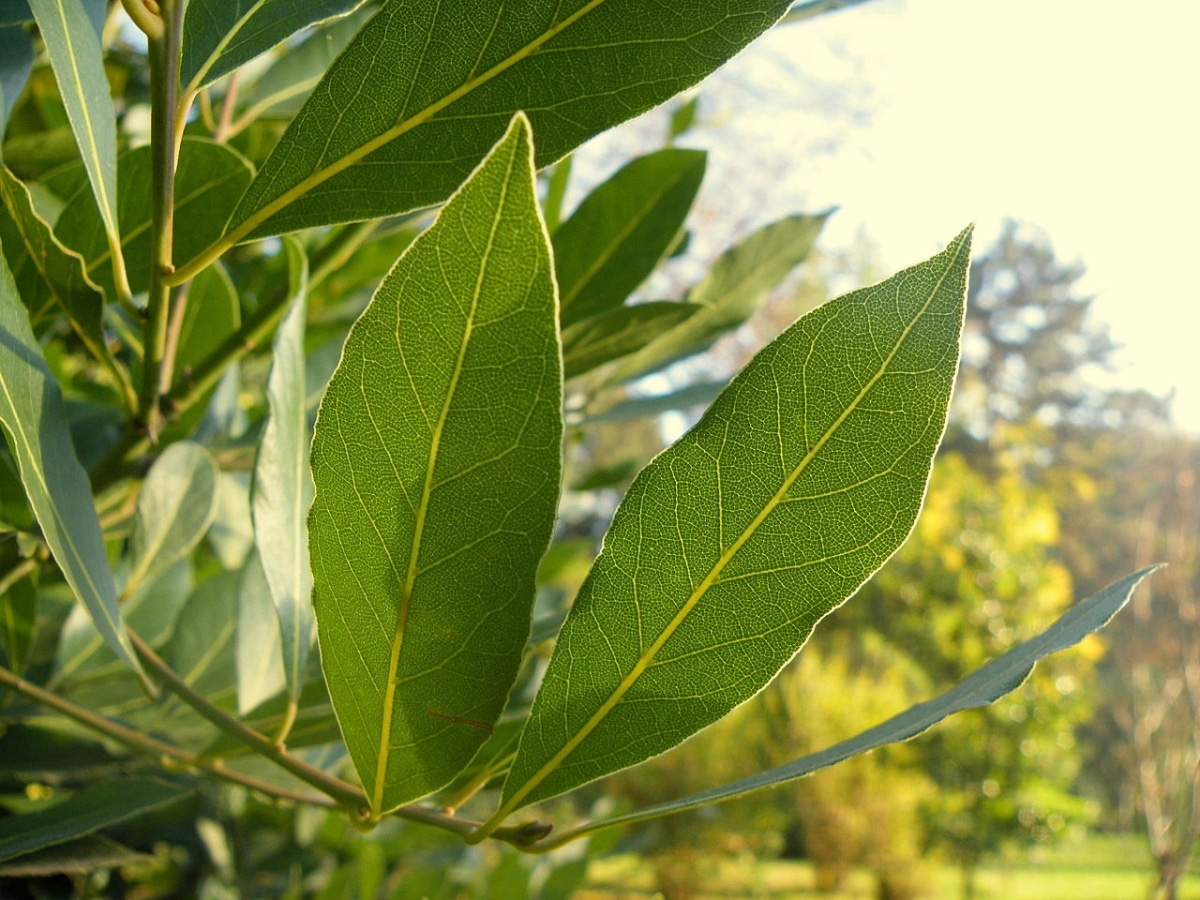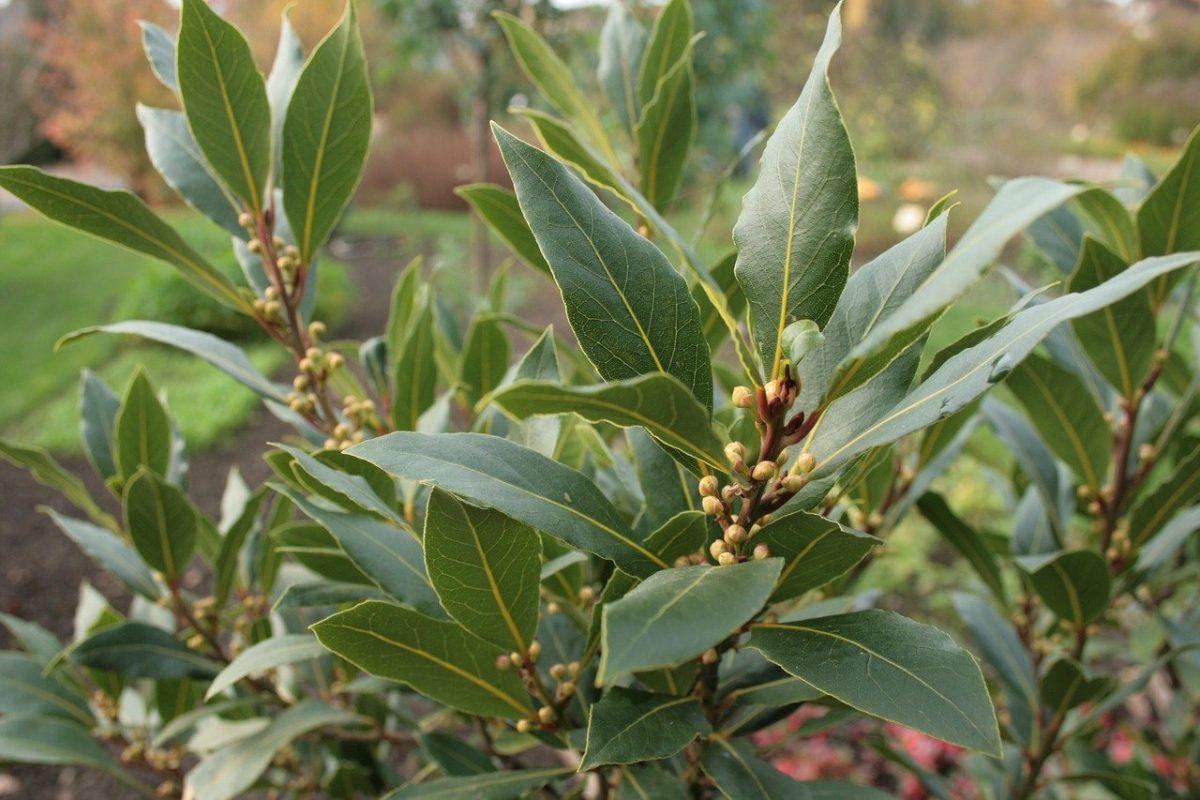
Image - Wikimedia / Marija Gajić
Laurel is an arboreal plant, but it is cultivated so much as a shrub that it is often classified as such, and not as a tree. But in a blog like this, we couldn't forget about him. And it is also very resistant to drought, making it ideal for low-maintenance gardens.
It withstands high temperatures, direct sun, and poor soils very well; hence it grows without problems almost anywhere. And if that was not enough, it has many usesboth ornamental and culinary.
Origin and characteristics of laurel
The laurel or lauro is an evergreen tree that grows in the Mediterranean region. Its scientific name is Laurus nobilis, and belongs to the Lauraceae family. It grows to a height of between 5 and 10 meters, with a more or less straight trunk whose bark is greyish. The crown is rounded, very dense, and measures about 3 meters wide. The leaves are lanceolate, green and leathery. They have a main nerve that runs from the base to the tip. Plus, it's pretty easy to see the pores if you get up close, let alone with a magnifying glass.
During the spring it produces yellowish flowers in small clusters.. The fruit is a berry of about 10-15 millimeters that starts out green and ends up dark, almost black. Inside it contains a single seed of about the same size.
Uses of laurel
As we said at the beginning, it is a plant that has several uses. Let's see them:
- Ornamental plant: in a garden it is used as a hedge, be it medium or tall; as a solitary specimen; or even in a pot if it is pruned.
- Culinary: Its leaves are used as a condiment in many recipes. In addition, they have health benefits.
- Wood: it is very hard, and is used to make frames.
What are the benefits?
The leaves are basically used as a stomach tonic. It helps to whet the appetite, but also to aid digestion. Besides, it is cholagogue and carminative. On the other hand, the essential oil that is extracted from the fruits is used for inflammation.
What are the laurel care?
Lauro is a plant that does not need much care. However, like any self-respecting plant, it needs to be placed in the right place so that it can grow correctly. So, let's see how to maintain:
Location
It is a tree that it has to be outside, in a corner where it gets direct sunlight throughout the day. It is important that, in case of having it on the ground, an area a little far from where there are pipes is found; in fact, it is best to plant it at a distance of at least four meters from these.
Soil or substrate
- Garden: laurel grows in neutral and alkaline soils. It has no problems in soils poor in nutrients.
- Flower pot: if it is kept in a pot, it must be cultivated with a universal substrate (for sale here) bearing perlite; in case it does not carry, it is highly recommended to mix it with 30% of this last substrate as it is important that the drainage is good. For this reason, it must also be planted in a pot with holes in its base, and without a saucer.
Irrigation

It will depend on whether it is kept in a pot or in the garden. Potted, it has to be watered from time to time, since the soil dries out quickly and the roots have obvious space limitations, so they can only absorb the water they have in the container. But it must be taken into account that they do not support excess humidity, so they will be watered about twice a week in summer, and less the rest of the year.
In case you have it in the gardenIt only needs to be watered once or twice a week. Even if a minimum of 350mm of precipitation falls in your area per year, from the second you will be able to space out the risks more and more until they are completely eliminated.
Subscriber
The subscriber is advisable if it is in a pot. A fertilizer such as guano, in liquid form (for sale here), will stimulate growth and make it grow much better, healthier.
If you have it in the garden, it will not be necessary. But of course you can put a little mulch on it in spring and summer (for sale here), or compost for example.
Multiplication

Image - Wikimedia / SABENCIA Bertu Ordiales
El Laurus nobilis multiplies by seeds. They can be sown freshly harvested, towards the autumn, in pots or forestry trays with soil for seedlings. If they are exposed to the sun or semi-shade, they will germinate throughout the spring.
Transplant
will be transplanted in spring. If it is in a pot, it will be done every 2 or 3 years.
Pests
Three affect it: mealybugs, aphids and Psila. The symptoms are:
- Mealybugs: is your main enemy. They make the leaves very ugly, and they also secrete a molasses that attracts the black fungus. They don't kill him, but they do weaken him. It is best to do preventive treatments at the end of winter, with diatomaceous earth (for sale here).
- Aphids: like the previous ones, they also feed on the sap of the leaves, as well as the flowers. They can be eliminated with diatomaceous earth, or with an anti-aphid insecticide (for sale here).
- psylla: they make the leaves deform as they feed on them. It is not visible since it does not stay on the same sheet for a long time. It can be treated with pyrethroid insecticides.
Management
Laurel diseases are: sooty mold or bold, wilt, bacteriosis, and root rot. Let's know what the symptoms are:
- sooty mold: it is a fungus that covers the leaves with a blackish substance. It causes aesthetic damage more than anything, and always appears when there is an infestation of mealybugs, aphids and/or whiteflies. If the pest is removed, the fungus will disappear.
- bacteriosis: Bay bacterial infections are caused by Pseudomonas. They cause the appearance of mottled spots on the leaves, cankers and wounds. It is treated with copper.
- Wilting: is caused by Xylella fastidiosa, a bacterium. The symptoms are: general decay, chlorotic leaves, and drying of leaves and branches. In early stages, the affected parts can be cut and sealed with healing paste, but unfortunately it is usually fatal.
- Root rot: occurs when the soil is not able to filter the water quickly, or when the plant is watered too much. It is about improving the characteristics of the soil, mixing it with perlite for example, and watering it from time to time.
Rusticity
The laurel resists up to -7ºC.
Where to buy laurel?

Image - Wikimedia / Marija Gajić
If you want, you can get your copy from here.
What did you think of this tree?
